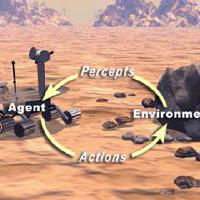 Environment Interface Standard
Environment Interface Standard
The environment interface standard (EIS) has been developed to facilitate connecting software agents to environments. Software agents typically are connected to an environment to control part of that environment. An example is a software agent that controls a bot in a game like Unreal Tournament (we plan to make the code for this game available on eishub soon). There needs to be some glue code that allows the agent to send commands (called actions in EIS) to the bot (also called a controllable entity in EIS) and to receive information about the bot (called percepts in EIS). EIS provides a standardized way for providing that glue code. Because you want your agent to do something intelligent when it is connected to an entity, EIS has been developed with so-called intelligent agents in mind.
EIS moreover has been developed to impose as few requirements on the choice of agent language or platform that you want to use for writing software agents. The problem that EIS aims to solve is to have to write code for connecting agent platforms to a particular environment only once. Instead of having to write platform-specific code for each environment, any agent platform that supports EIS can be connected to an EIS-enabled environment without additional effort. That is, after making sure that an agent platform supports EIS, agents written for that platform can be connected to any EIS-enabled environment and vice versa.
Featured Pages
Filter by label
There are no items with the selected labels at this time.